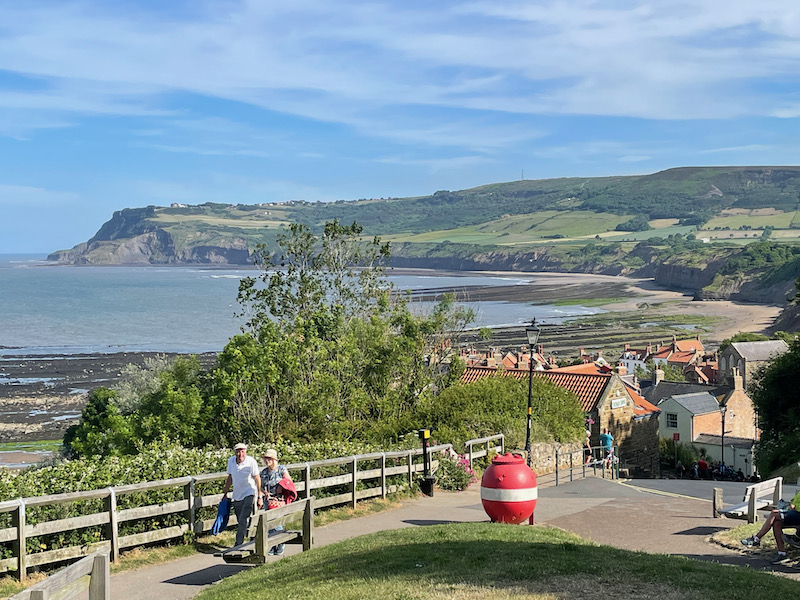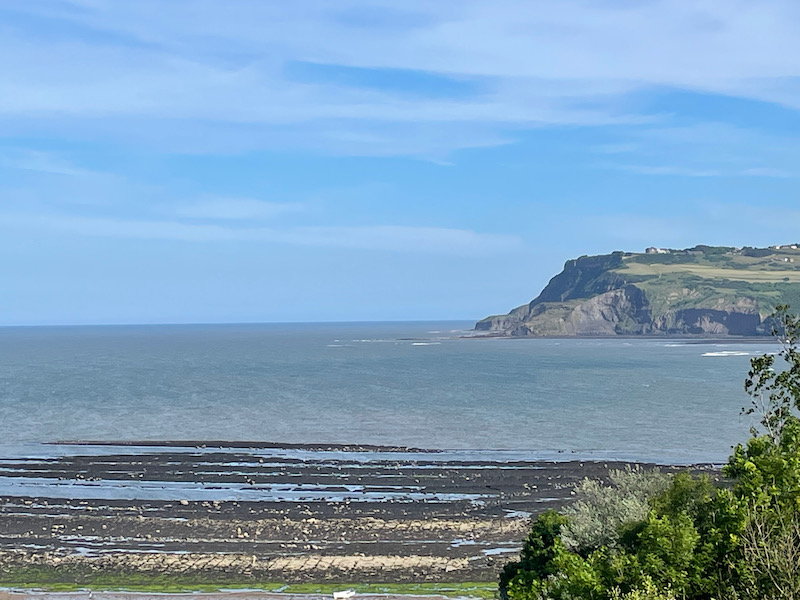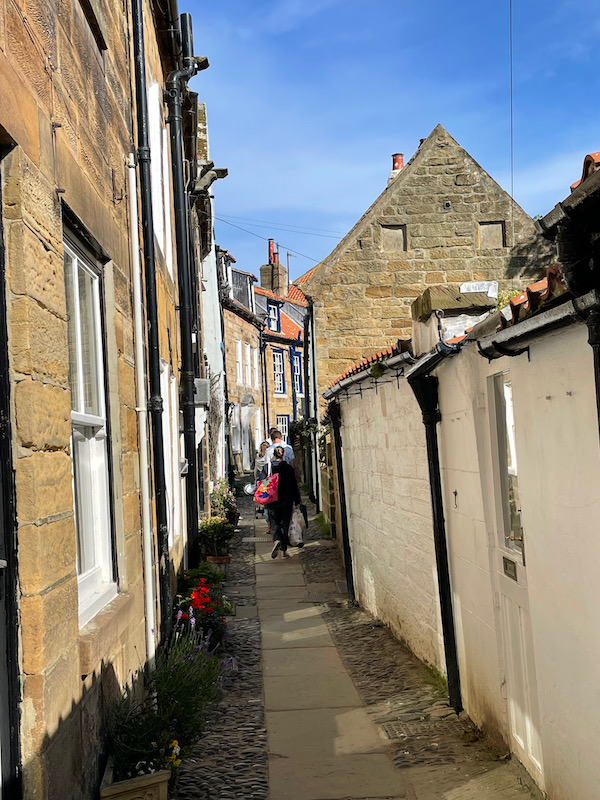Our Blog - York, England (and a few places nearby)
We popped up to York for a long weekend to spend with a couple of friends. Getting up there was fairly smooth ... flight into London Stansted, train from there with a change in Peterborough up to York. The only issue was that our first train was late arriving in Peterborough and we thought we missed our connection. In fact, we think the connecting train was canceled because our friends were supposed to be on that train and we would meet up with them. Since their train was canceled, they rented a car and drove up from London. But we were able to catch the next train and ended up only about 30 minutes late getting into York. We got into our AirB&B and then met up with our friends when they arrived. We stayed just a few minutes walk from the old city, but we had a great view of the York Minster from our rooftop terrace.

There are enough pictures of the famous York Minster that I moved it to its' own blog page.
A bit of info on York: the city was founded in 71 AD and became the capital of a Roman province. There was a fort built here, which lies under the foundations of the cathedral. After the fall of the Romans, it was the main city of King Edwin of Northumbria in the 7th century. York was a clear target for the Vikings and they invaded and captured the city in 866. It was renamed to Jorvik and there is a Viking Center/Museum in York where you can learn about the city under the Vikings. The vikings were expelled in 954 and the Normans took over. William the Conqueror built a wooden fortress on a motte and then rebuilt it in stone when the wooden one was destroyed a year later, which is now called Clifford's Tower. You'll see the tower and hear about the infamous massacre later.
York was a walled city, with the first walls being built around the Roman fortress. Additional walls were built during the medieval times and substantial portions of the walls remain. In fact, York has more miles of intact wall than any other city in England. Sections of the Roman walls form part of the existing walls, including a section that we walked, between Bootham Bar (gate) and Monk Bar (gate). There were four main gatehouses, or "bars", (Bootham Bar, Monk Bar, Walmgate Bar, and Micklegate Bar). In medieval times, they were used to restrict traffic and receive tolls from those entering. Over the 4 days that we were in York, I think we walked every part of the wall that remains (that we could walk).
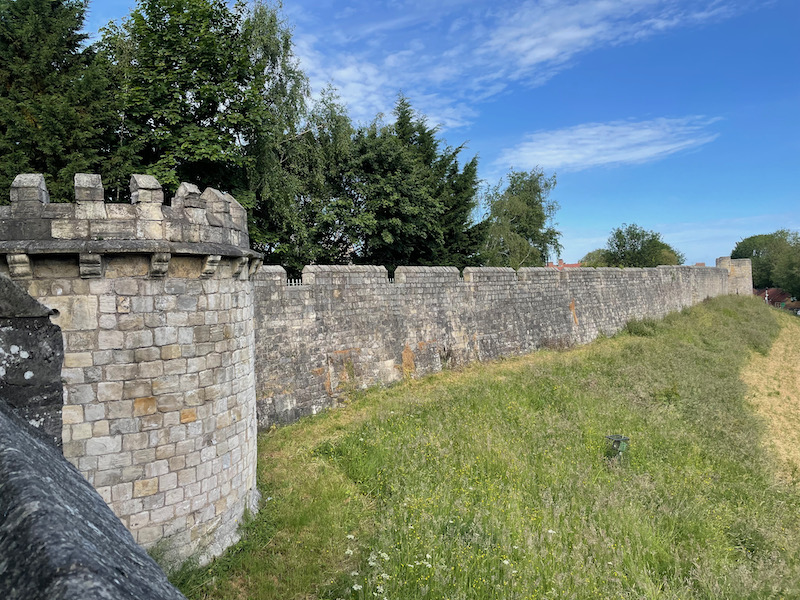

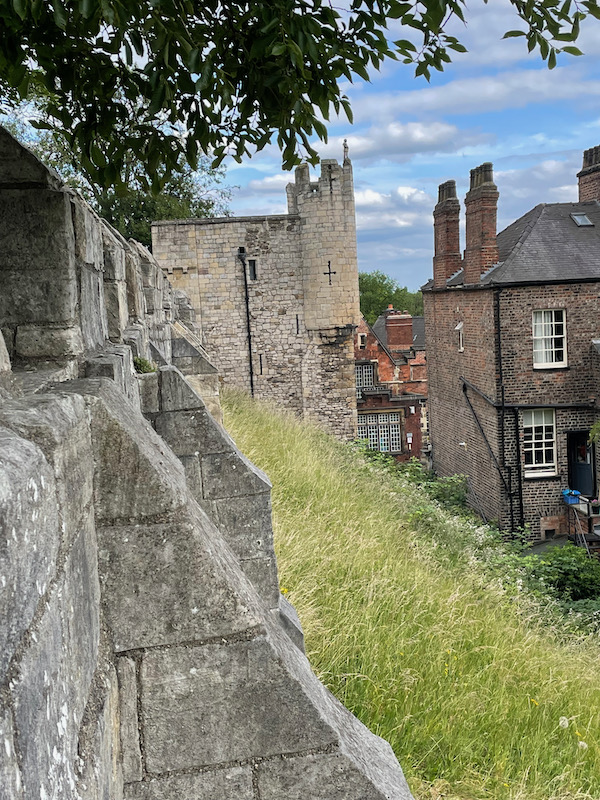

The Monk Bar is a 4-story tall gatehouse and is the tallest and most elaborate of the 4 main gatehouses. It dates back to the early 14th century and was designed to be a self-contained fort. Each floor is capable of being defended separately and the gate still has a working portcullis. The decorations on the outside includes the coat of arms of the City of York and the royal arms of England and France.
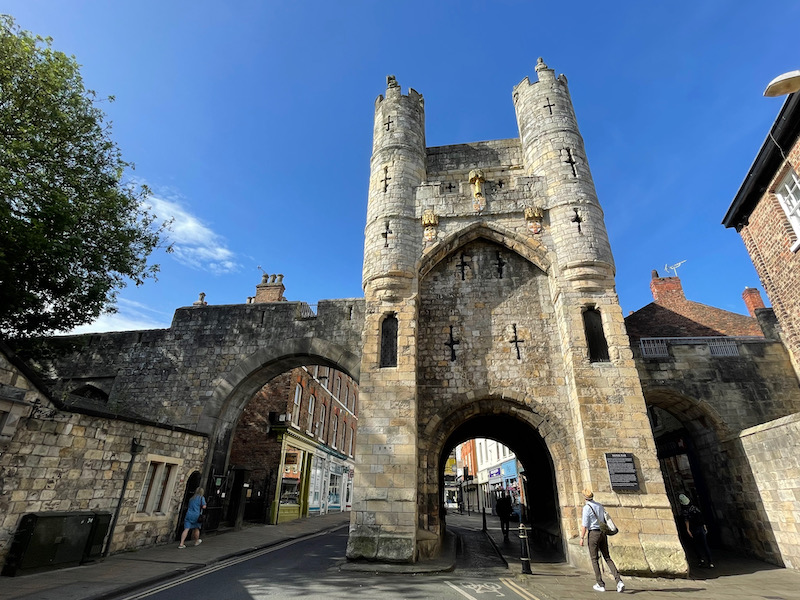
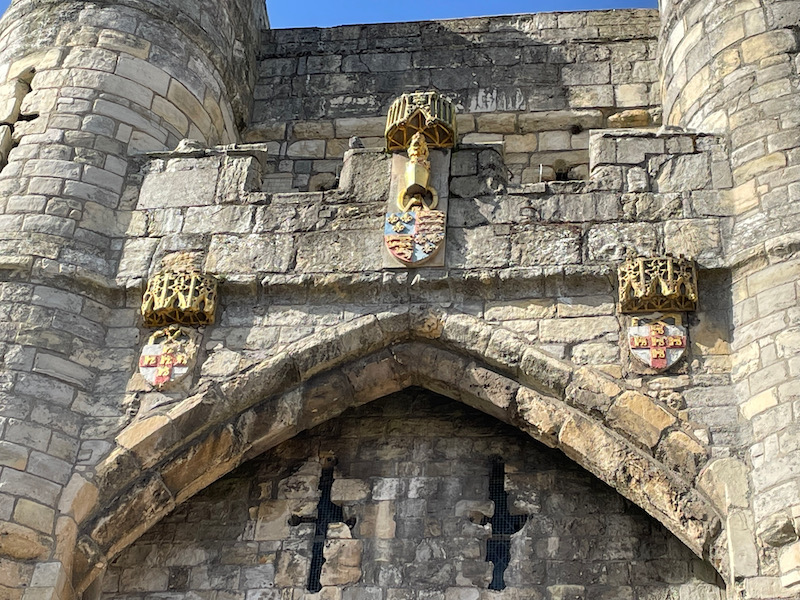
Stonegate follows the line of an old Roman road, which ran between what are now St Helen's Square and the York Minster. Along the way, there are several interesting things to see, which are mostly old Victorian store signs. I picked a couple of the more interesting ones. The first is Minerva, the Roman goddess of wisdom with a pile of books and an owl. This was a book seller and they were trying to show books and wisdom. The second is a royal coat of arms over a shop door. Queen Mary, King George V’s wife, often came here to buy things. Shops and companies who provide goods and services to the royal family are sometimes rewarded with a royal warrant and could display a royal coat of arms. This allowed them to show that the royal family bought things from them and was a way of drawing in other customers who wanted to buy at the same place the royal family did. The last one is a red devil, which is not indicating what you would first think. This was a printers shop and apprentices were called "printers’ devils" because they carried hot metal type and got themselves covered with black ink that was difficult to clean off. This little devil is a reference to those printers’ devils.


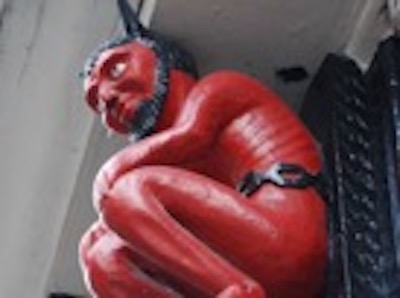
I mentioned Cliffords Tower earlier, and here it is. The tower is situated on a tall hill, perfect for defending the city. This is actually the 2nd tower in the same sight. This original William the Conquerer tower was the site of a horrific massacre in 1190. After the Norman conquest of 1066, a number of Jews moved from France to England. The early Norman kings needed to borrow money but money-lending was forbidden for Christians but was permitted by Jews. This allowed some of the Jewish population here to be protected by the Crown. However, by the mid-12th century, there was growing hostility towards the Jewish communities in England. When the tower keeper left one day on other business, the Jews that were holed-up in the tower refused to let him back in. The wooden tower was surrounded by an angry mob and when they realized that they couldn't hold out, they committed suicide and set the tower on fire rather than be slaughtered by the Christian mob. The tower was rebuilt almost immediately. Construction on the current stone tower was completed by the late 13th century.

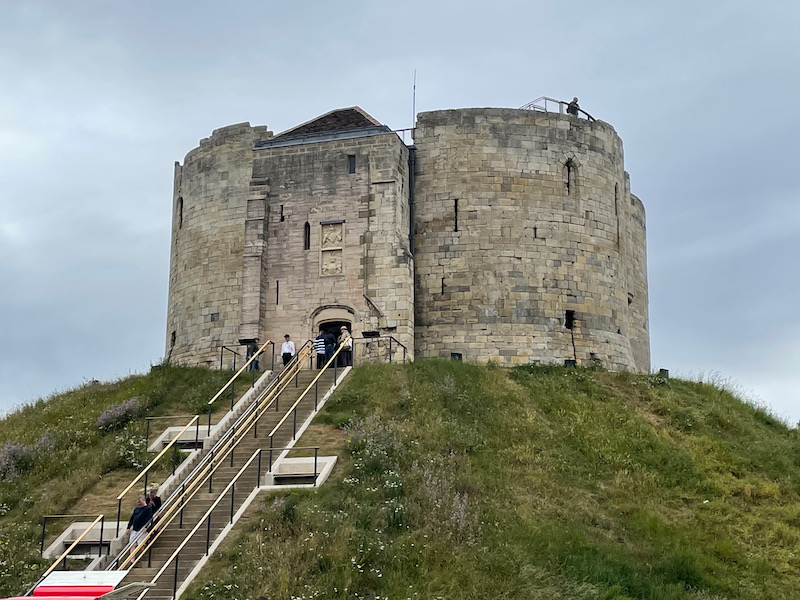
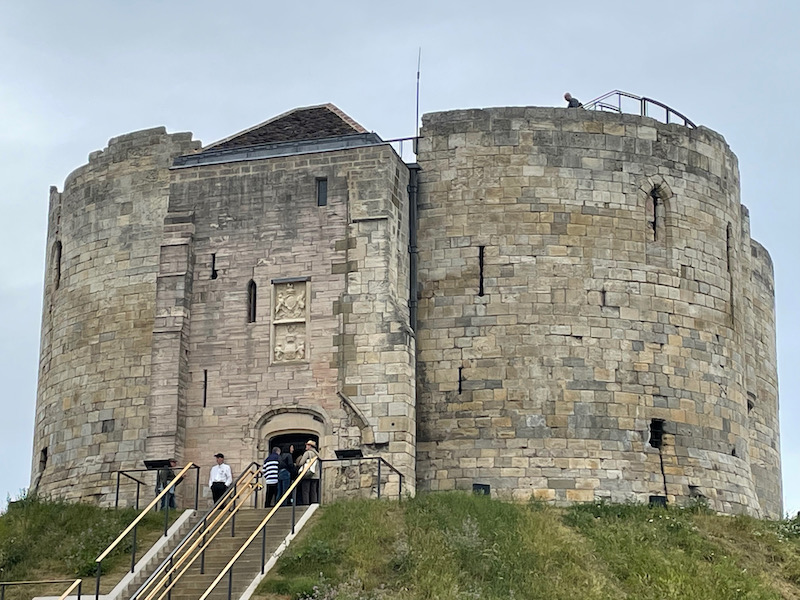

There are two rivers that go through York, and there are little self-driving boats that you can take on one of them. We decided to let the guy's drive while the ladies relaxed on the back. We got to see a set of the bridges up-close as we passed underneath them. It was also nice to see so many outdoor seating areas at restaurants and pubs along the water ... this is one thing that I think Toulouse is really missing!
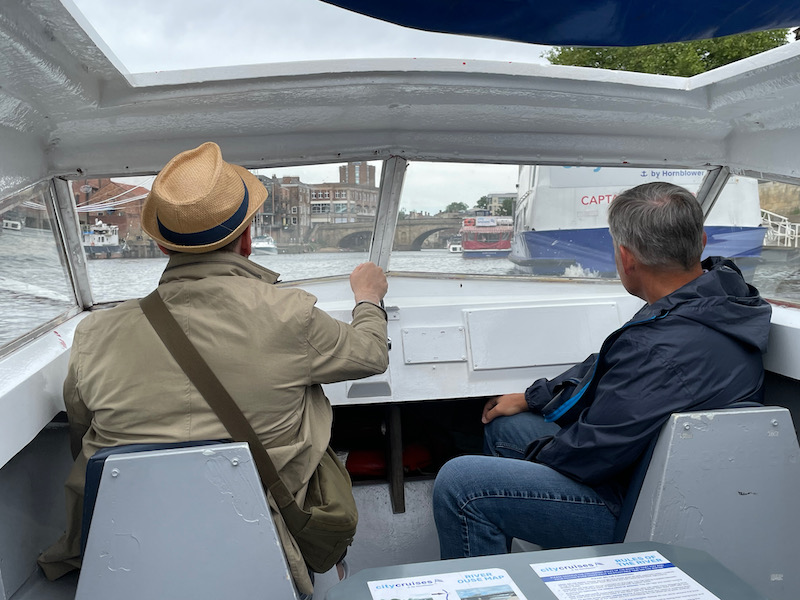
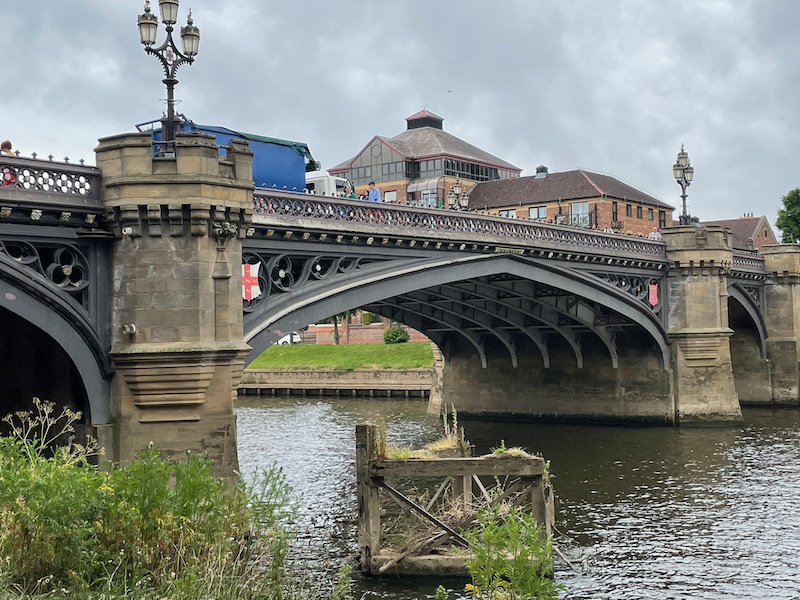
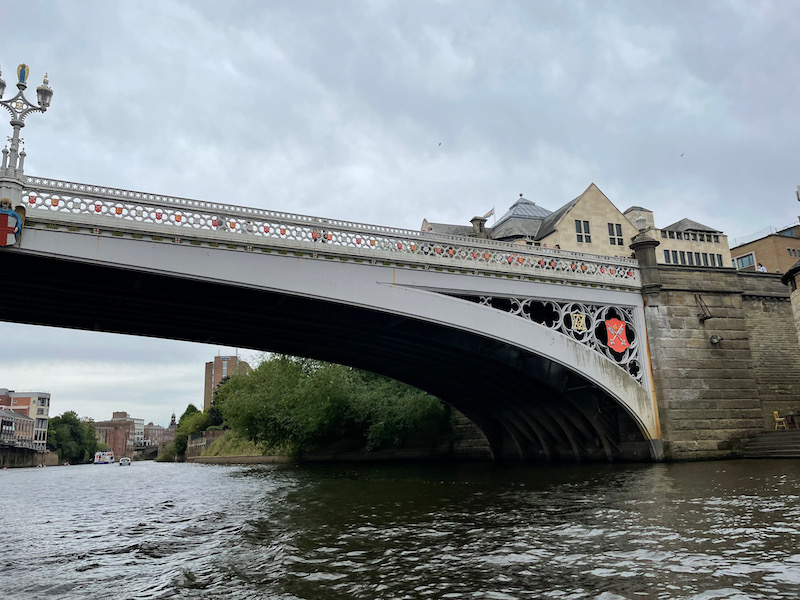
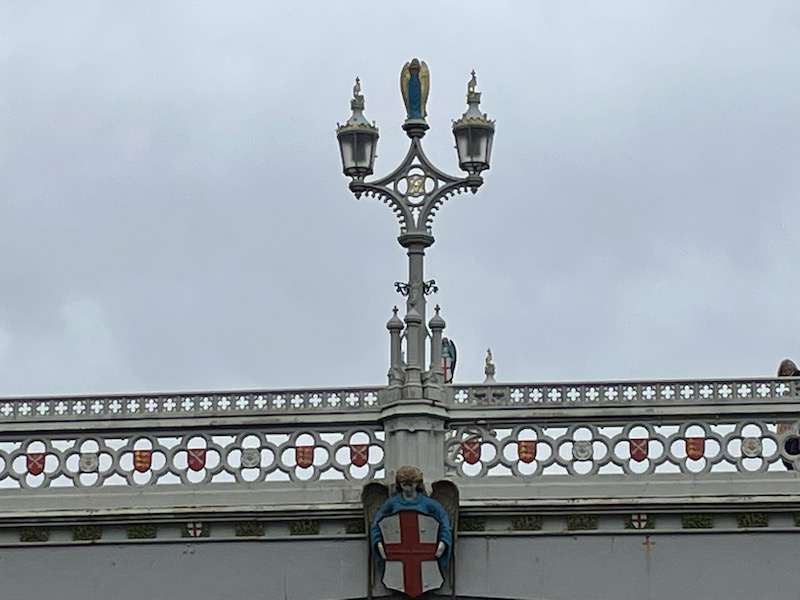

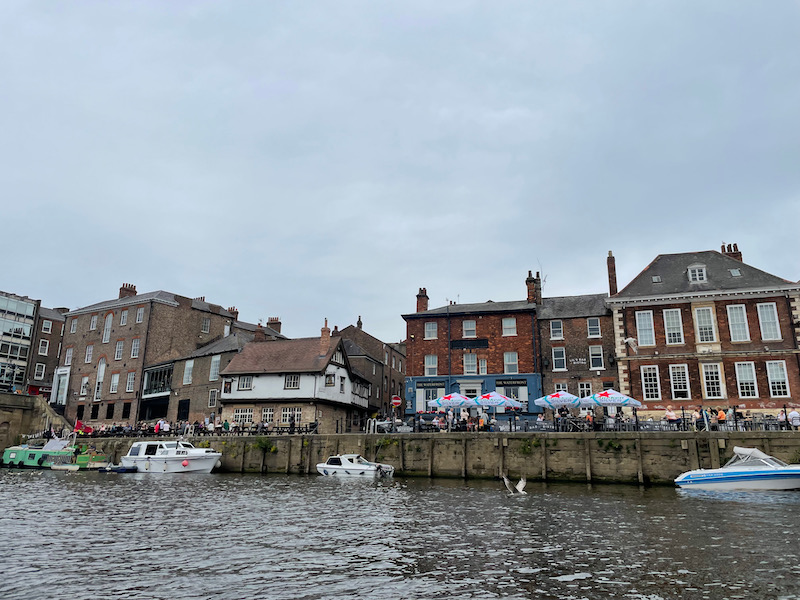
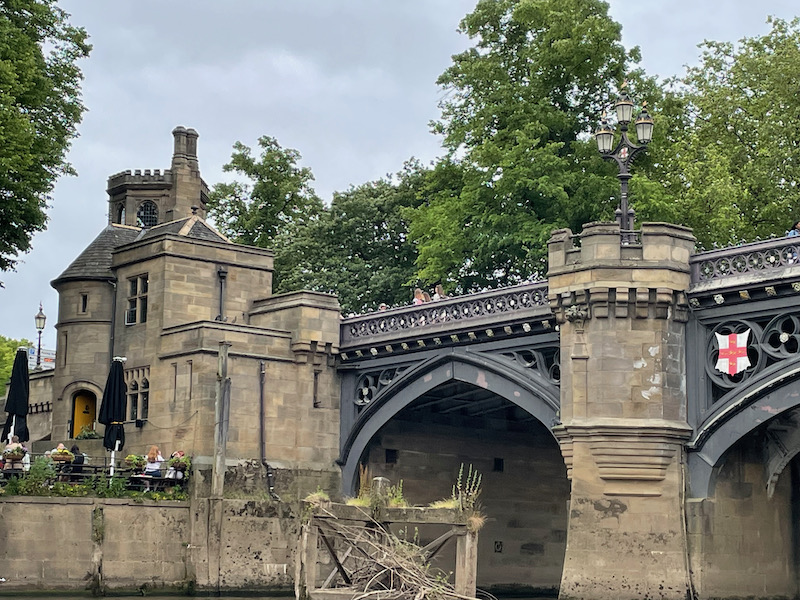
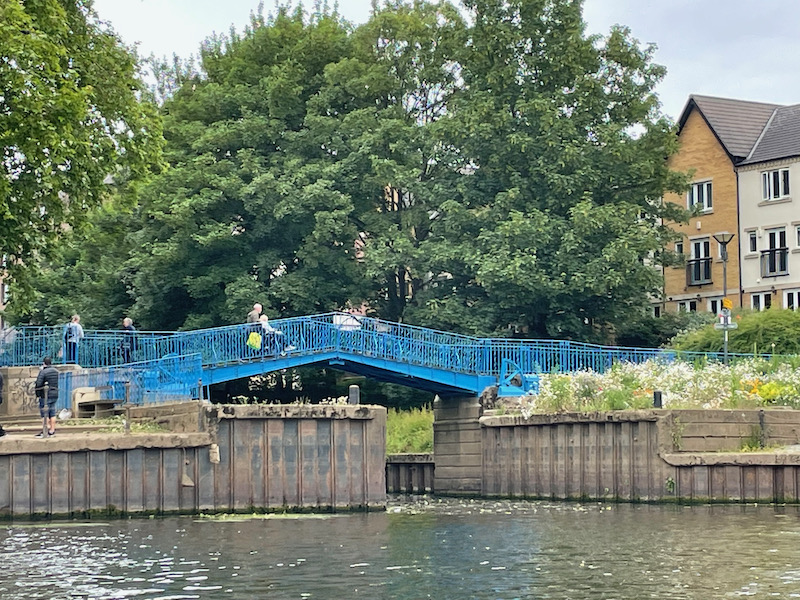
Cliffords Tower (that you saw a bit above) is part of the York Castle, which is where the York Castle Museum sits today. The Museum was founded in 1938 and is housed in several prison buildings that were built on the site of the castle in the 18th century using stone from the ruins of the castle. We didn't take time to go into the museum (something to put on the list for next time), but it sounded quite interesting, with a recreated Victorian cobbled street with costumed guides and period rooms including a schoolroom.
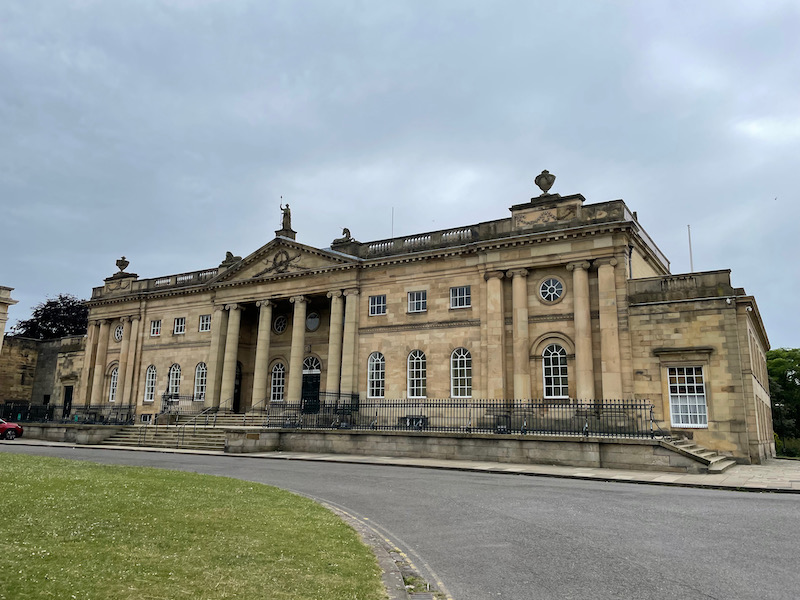
The Shambles is an old street with overhanging timber-framed buildings, some dating back as far as the 14th century. The word "Shambles" is an obsolete term for an open-air slaughterhouse and meat market. In 1885, 31 butcher shops were located along the street, but now none remain. Historically, many small streets in York had a similar appearance to the Shambles, but they have pretty much all been rebuilt. The Shambles is the last survivor and it has become quite the tourist attraction with lots of shops and pubs lining the short street.
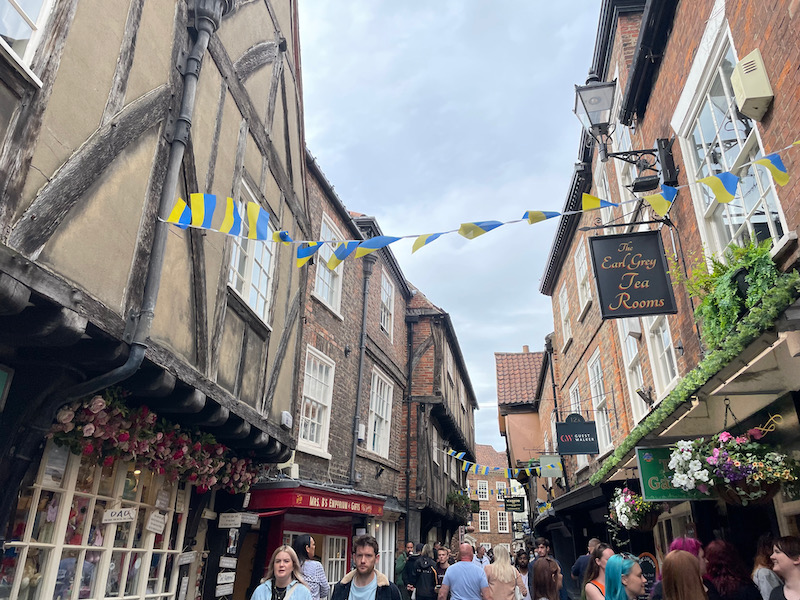
We spent Sunday morning doing some horseback riding outside of York ... well, 3 of us did. Tom had a hurt shoulder and didn't want to irritate it with the up-and-down of riding. It was a nice stable about 45 minutes out of town in the rolling countryside. I was riding this lovely white and black lovely, named April.
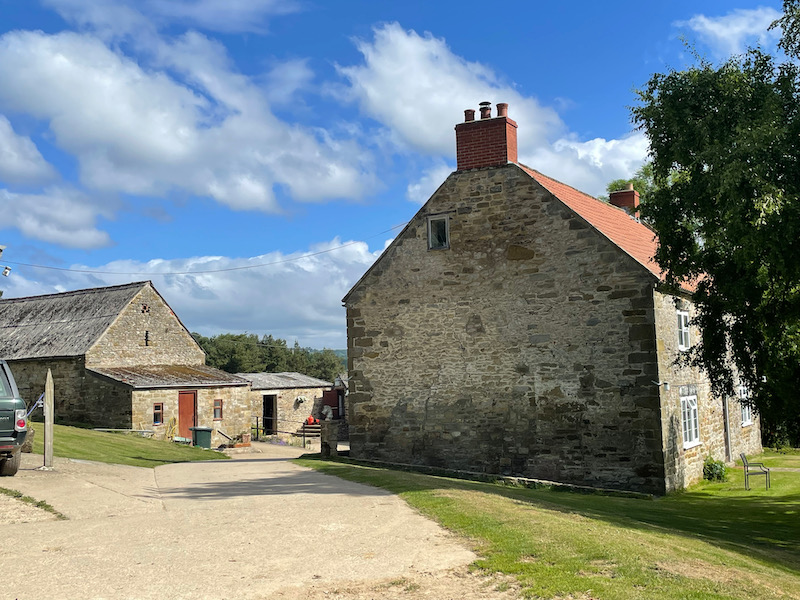
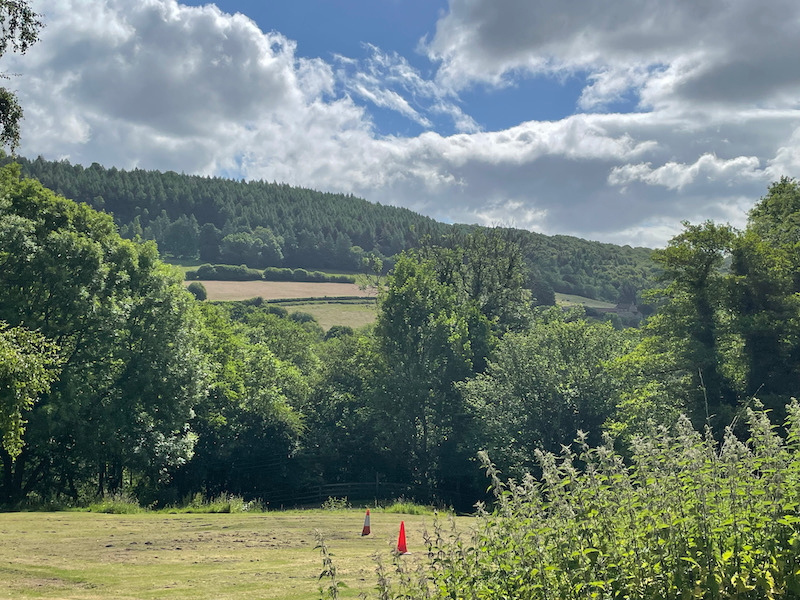
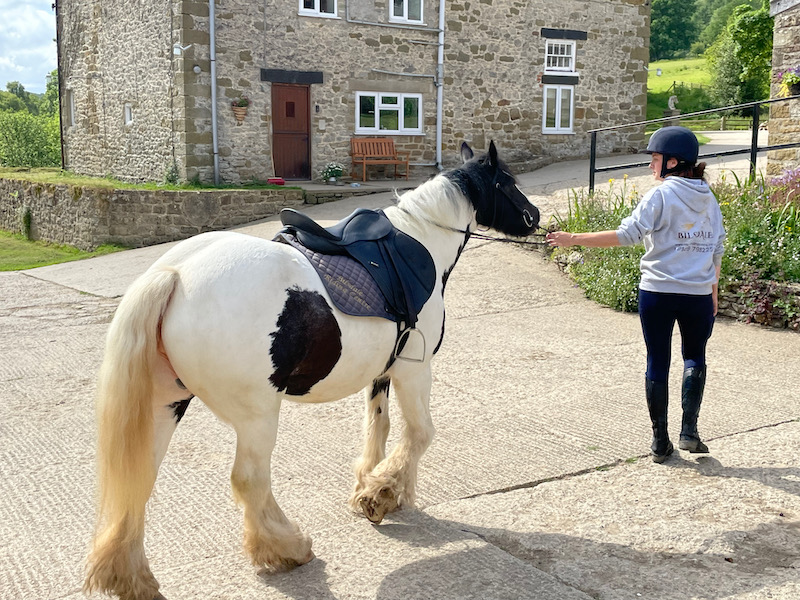
These are pictures taken by our guide of the 3 of us behind her. Jenn is the master horse-woman!
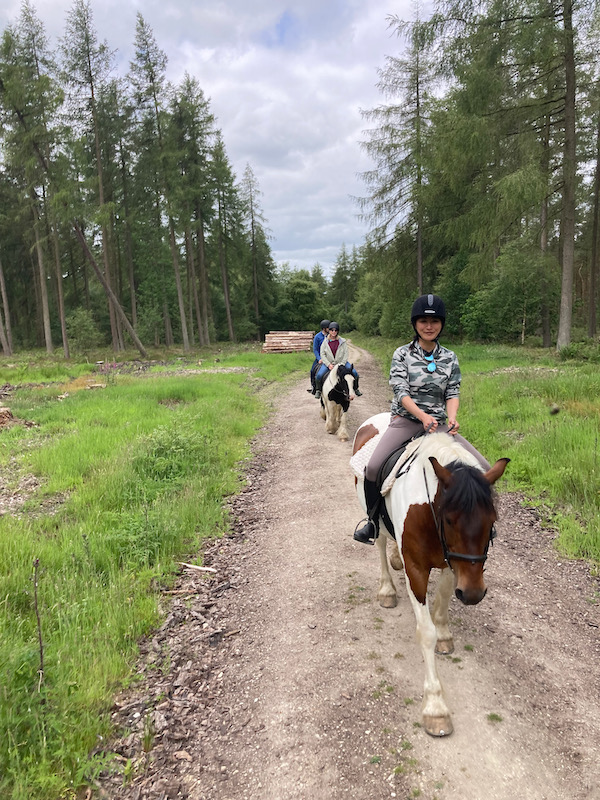

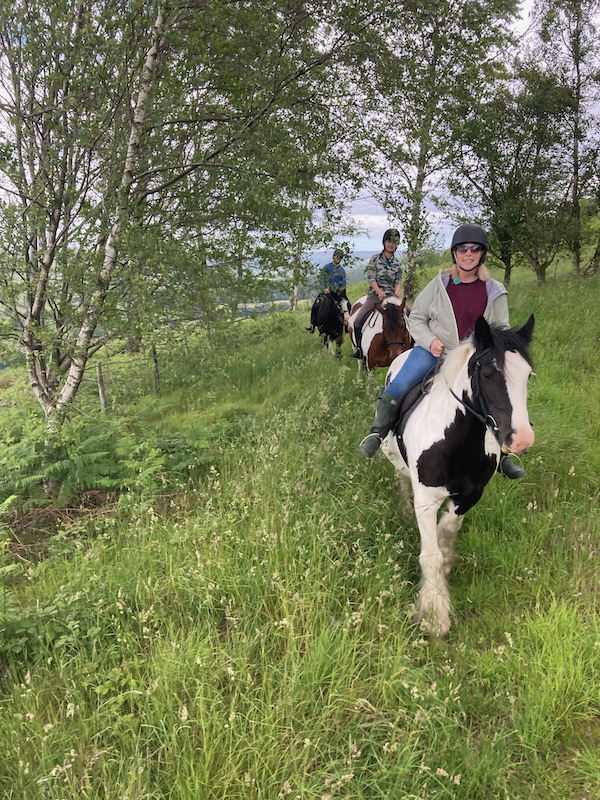
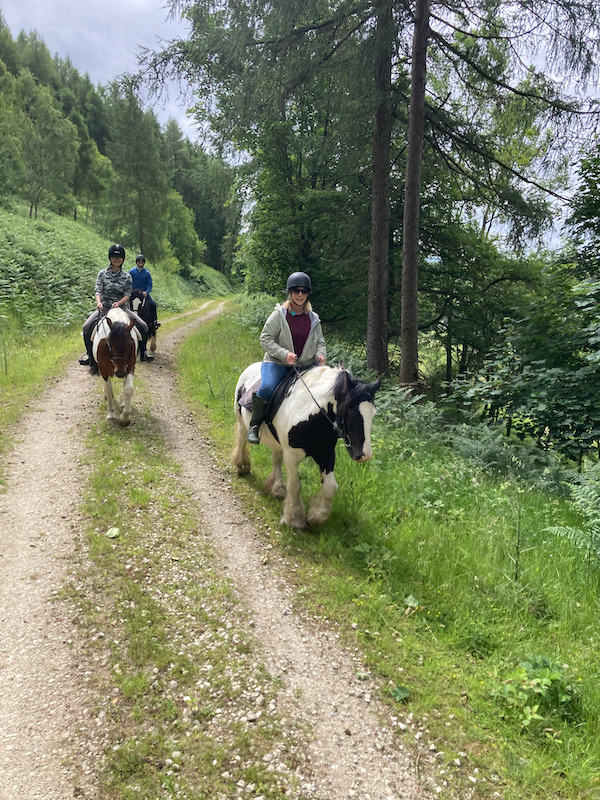
We stopped at a little market alongside the road and saw our first "Fresh Milk Vending Machine" ...

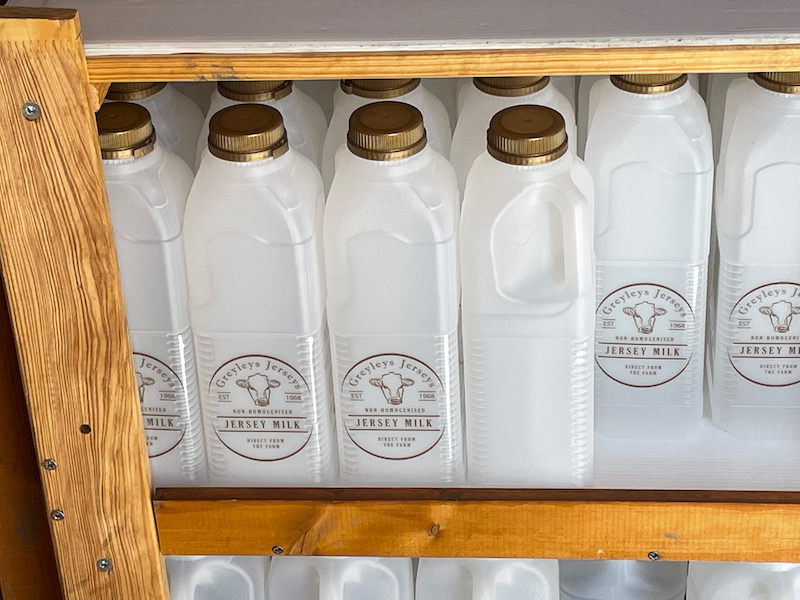
 START HERE
START HERE
We spent the afternoon out driving through Yorkshire, and our first stop was the town of Scarborough. It is a seaside resort with a high rocky promontory with the ruins of an 11th century castle. Supposedly founded around 966 AD by a Viking raider although there is no proof of it. There is proof of a small Roman station in the area from the 2nd to 5th centuries. You may know the song lyrics "Are you going to Scarborough Fair? parsley, save, rosemary, and thyme" ... The lyrics talk about the Scarborough Fair, a 6-week trading festival held in the Middle Ages.

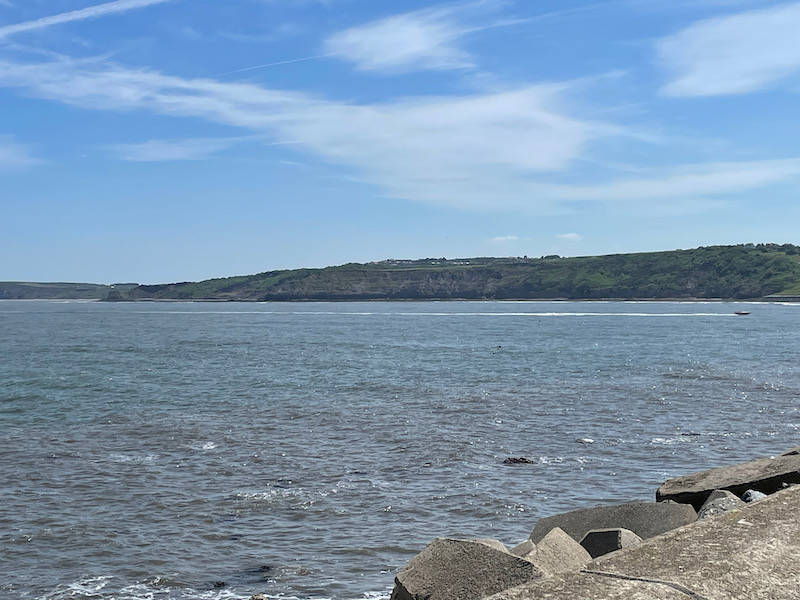
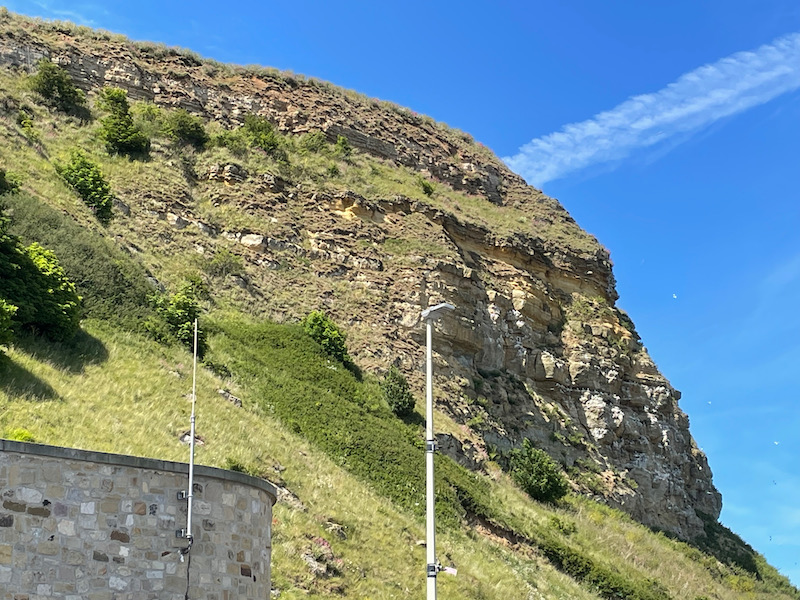
Unfortunately (in my opinion), the seaside resort now looks to me like a boardwalk on the Jersey shore.
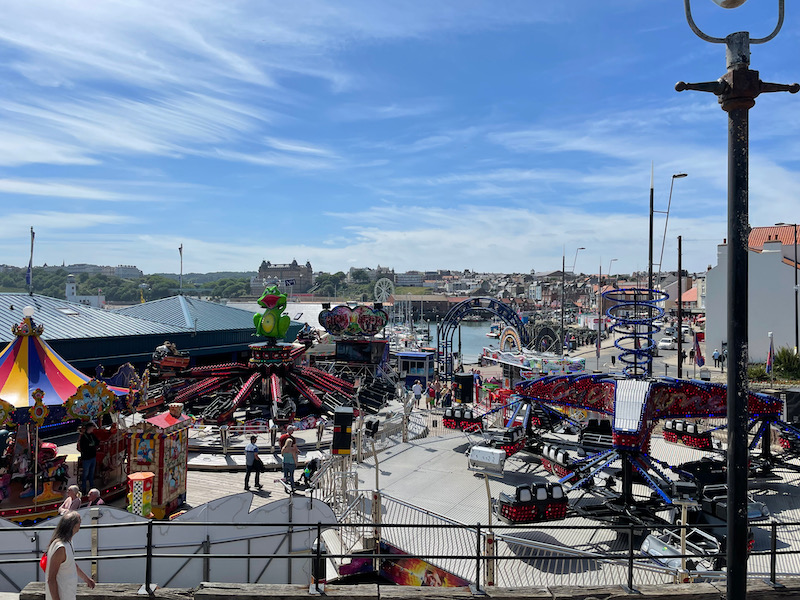

There were a few nice older houses along the way, and a huge beach. But again, to me the beach lost a bit with the ferris wheel and donkey rides.
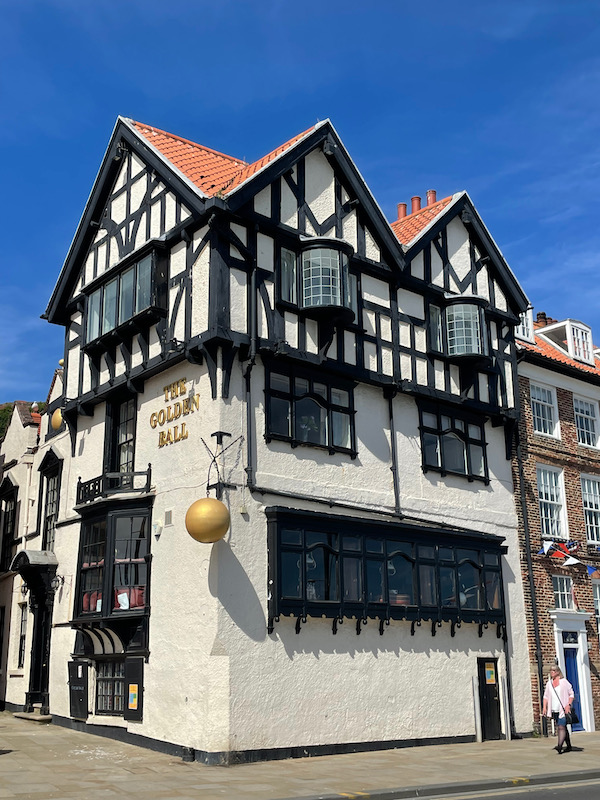
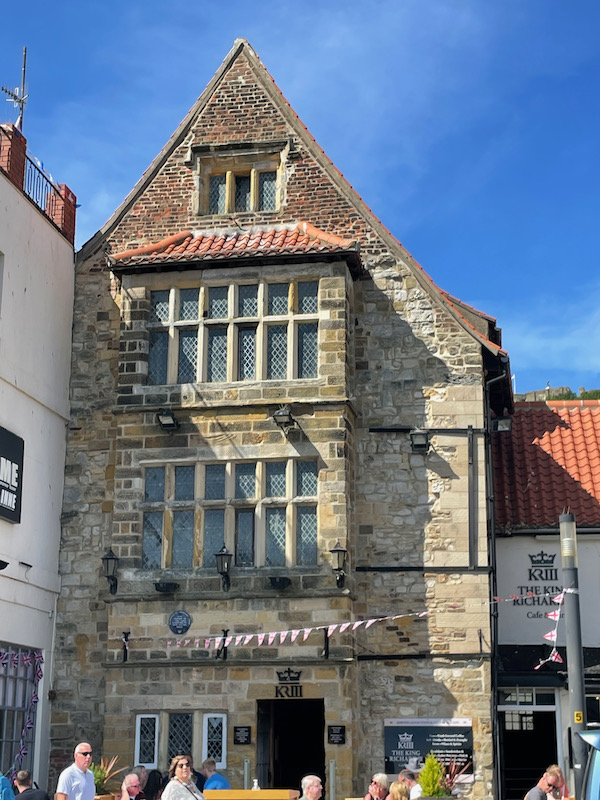


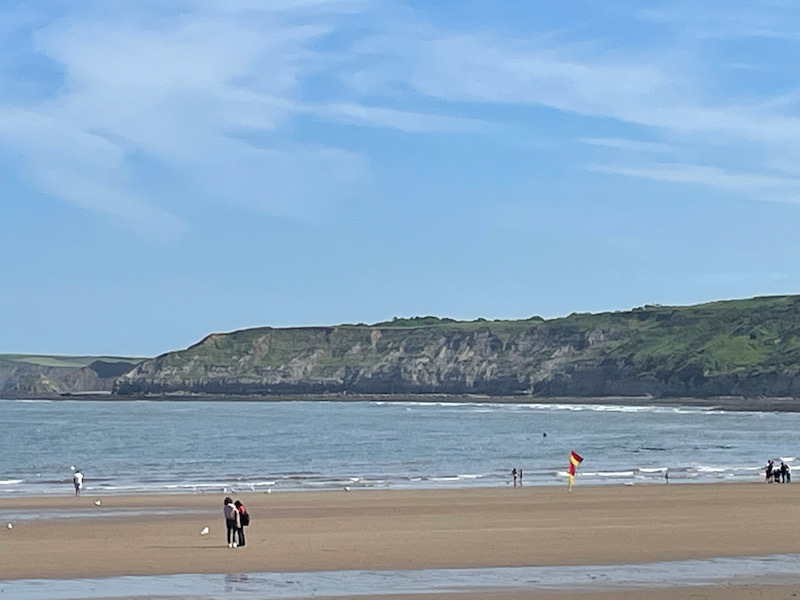
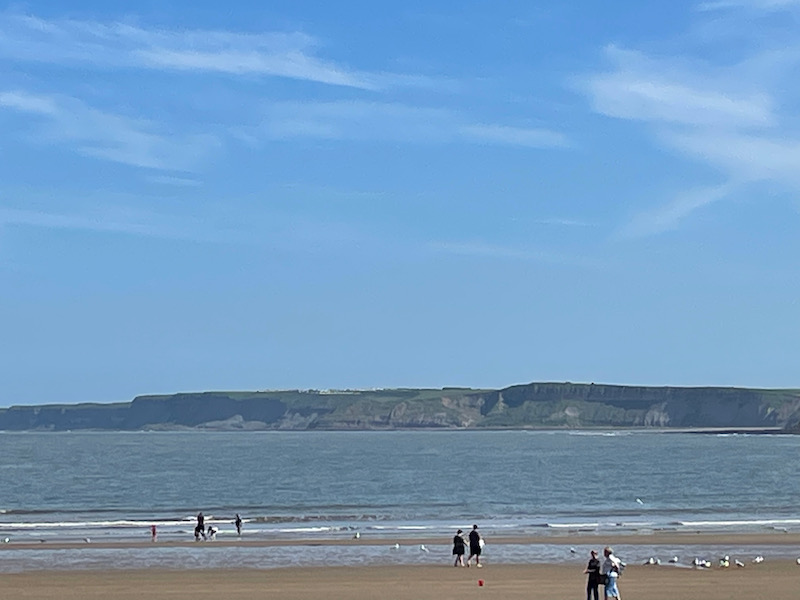

We took a Victorian funicular up the hill, and from there we got a nice view of the castle ruins and the beach/boardwalk area.

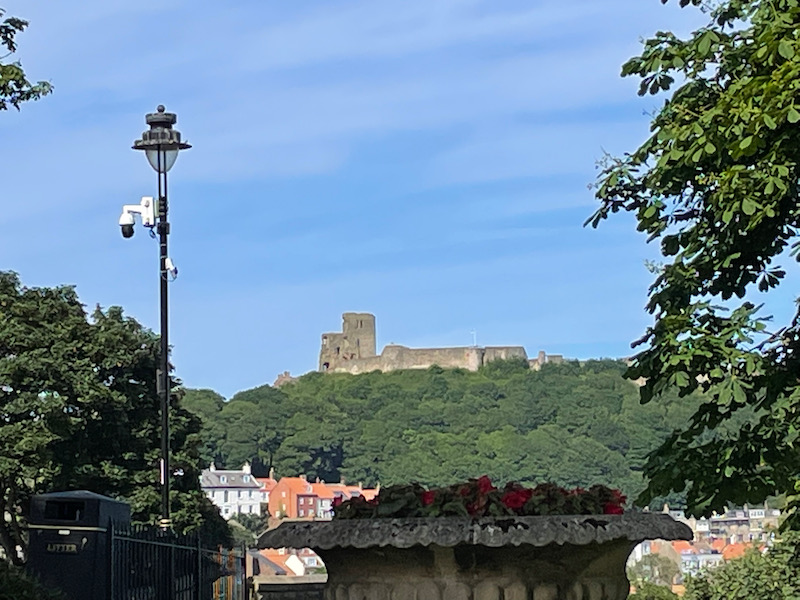

Then we headed to Whitby for dinner. It is a fishing village and has a 13th century Gothic abbey (or I should say the ruins of a 13th century Gothic abbey) up on a cliff overlooking the port and village. You can actually visit the ruins and the 17th century mansion next door, but it was too late in the evening for us to stop by. We also learned about the interesting connection between the town and Dracula. Bram Stoker, the author of Dracula, came here in 1890. Part of the novel Dracula is set in Whitby and he used the shipwreck of a Russian ship (with a cargo of silver sand) in the book, having a ship called the Demeter carry Dracula to Whitby with a cargo of silver sand.


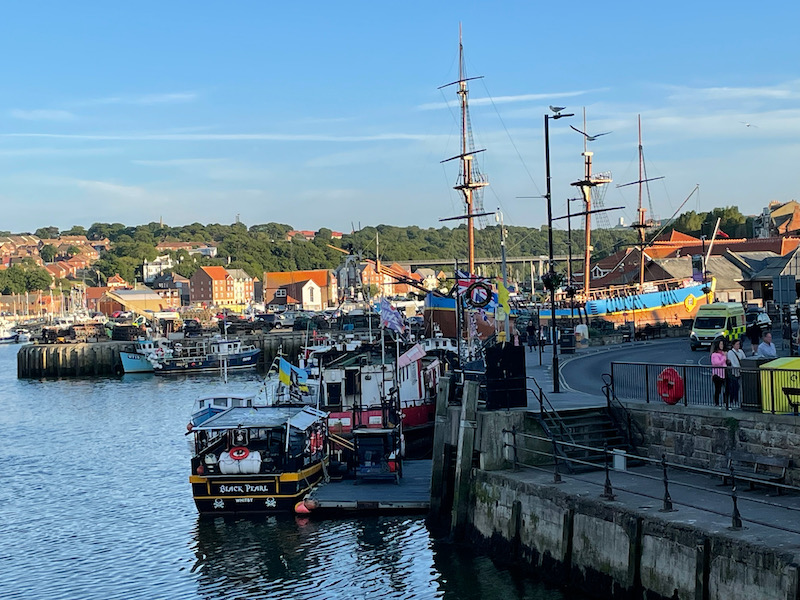
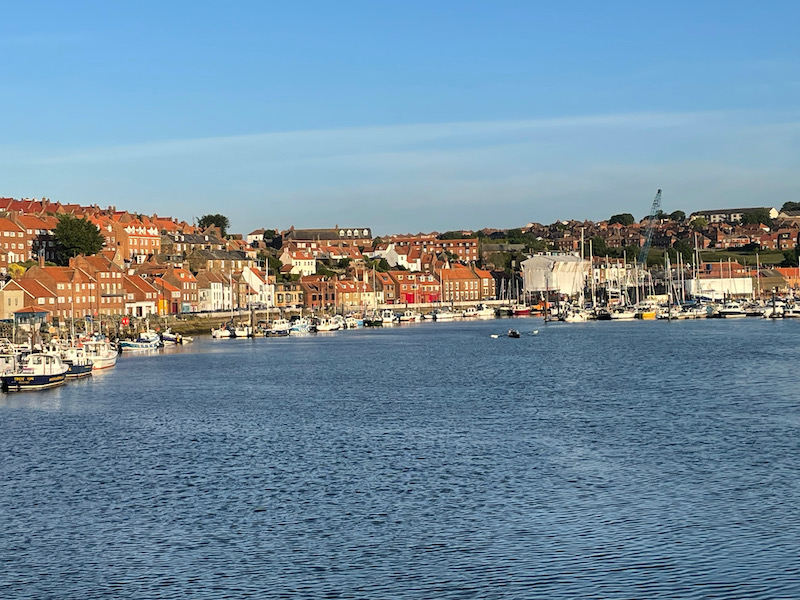
How can you NOT stop at a village named "Robin Hood's Bay"?? It is a small fishing village along the coast. It is built in a fissure between two steep cliffs and there are cute little alleys and houses lining the main road. There are also scenes in the novel Dracula set in Robin Hood's Bay as well.
